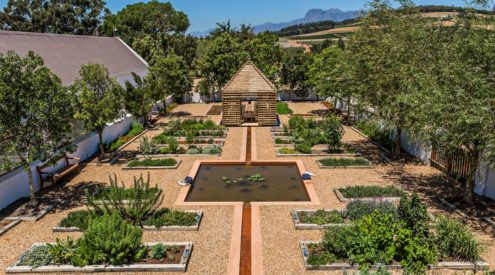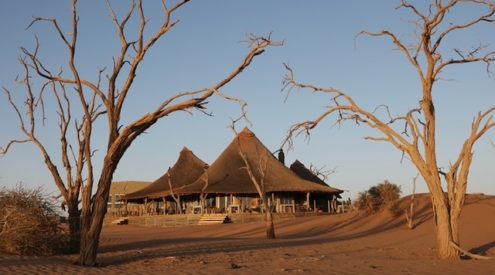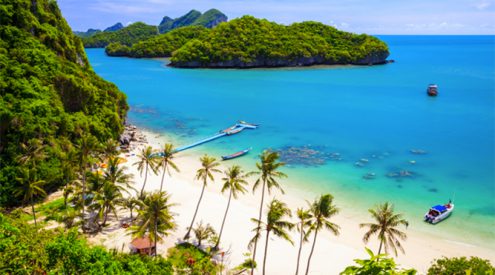The Land of Smiles, The Lake of Stars, The Warm Heart of Africa: Malawi definitely wins an award for the most saccharine nicknames of any African country. Marketing talk aside, there’s definitely something in a name. Those who make it to this little gem of a country speak of the friendliest folk in Africa; a giant bath-like lake stuffed with more species of freshwater fish than all of North America and Europe combined; a horizontal way of life; Central Africa’s highest mountain; culture, history, wildlife, forests and beaches.
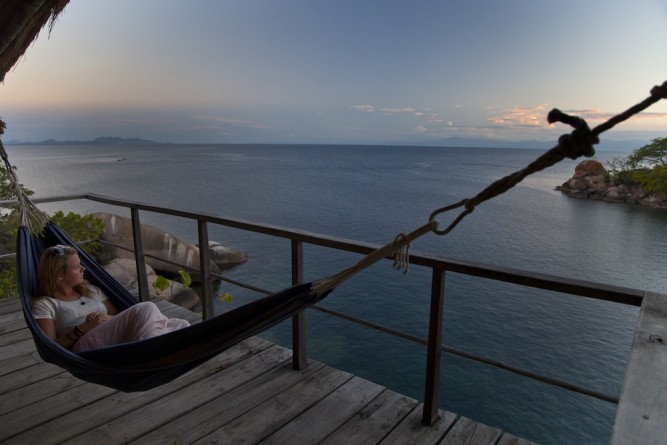
Mumbo Island
It was never a case of if Gemma and I should visit Malawi, but more a case of when. Plus my stepmother (a Kiwi-come-Malawian) would never have let us live it down if we hadn’t. And now, thanks to the impeccable Kelly White of the Malawi Travel Marketing Consortium in England, the ultimate tour is upon us. Having been back in the UK for six months of cold miserable yuckiness, it couldn’t have come at a better time. Snow in April? That’s just not cricket. So here we are in the Land of Smiles, and we intend on doing a fair bit of grinning over the next three months as we have one hell of a trip lined up.
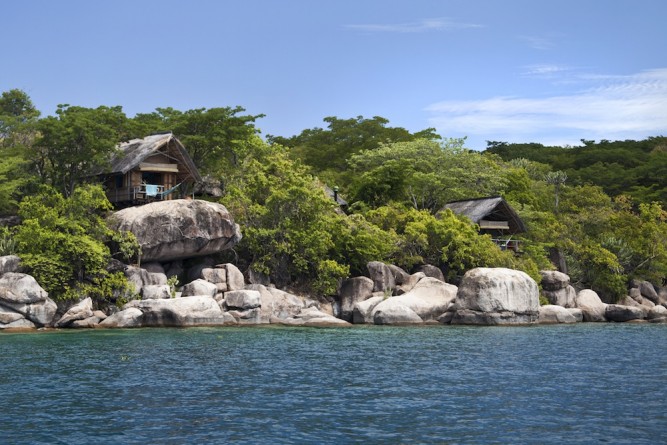
Last week was spent at Kayak Africa’s wonderful Mumbo Island Camp, which lies a 45-minute boat ride from one of Malawi’s more touristy pockets, Cape Maclear. Tucked away amongst Flinstonesque rocks, this is one of the most eco ecolodges I have stayed at. First of all, Mumbo has no electricity, but has instead invested in windup torches and solar lighting, which enhances the feeling of isolation and, um, eco-ness. Showers come courtesy of a tin bucket filled (at your request) with warm water by seamless staff. Food, drink and ice are shipped in daily. Toilets work on a dry-composting system so even the waste doesn’t go to waste here. The idea is that Mumbo Island Camp has almost zero ecological impact: if the lodge were to pick up and move tomorrow, it would very quickly be like it never existed.

Mumbo’s rooms also provide some of the most impressive views of any lodge, anywhere. I could have kicked back, slurped whiskey and swung happily from my hammock for hours on end, but those waters were just too tempting. It’s believed that over 800 species of cichlid are found in Lake Malawi. Most are what’s known as ‘mouthbrooders’ – females keep offspring in their traps until they’re old enough to fend for themselves. It’s a poignant sight, watching mothers hoover up their young, in order to protect them from the advances of predators. Another joy of diving here is the lack of salt and currents. The water is clean, warm and on the whole, still. Plus (unless you get nibbled by a ferocious ciclid), there’s very little to fear in these blue blue waters.
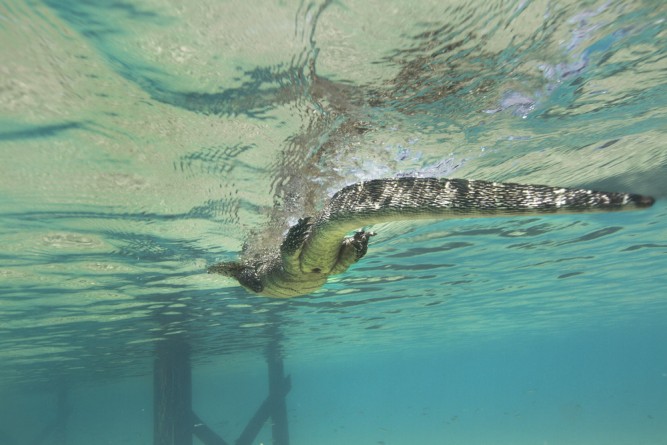
The rest of my trip to Mumbo was spent eating delicious, simple and plentiful grub, bantering with Camp Manager – the bundle-of-fun – Robyn, swimming with (and managing to photograph underwater – woo hoo) monitor lizards, snapping fish eagles, kayaking around the island, and generally having a jolly good time.
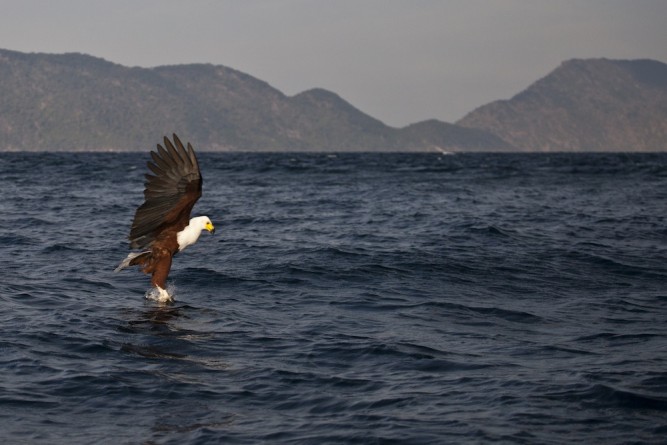
After Mumbo the hectic itinerary kicks in. Gemma arrives today and we begin our official tour at House Five in Blantyre, a perky lodge, nestled amidst the greenery with equally perky staff and large colonial-style bedrooms. Their restaurant, Quarter Bistro, serves incredibly tasty grub (with a special mention for the braaied chicken). Then to Huntingdon House for a few civilised brews at Thyolo Tea Estate, before Mkulumadzi Lodge on Majete Wildlife reserve for some (less sedate) Big Five action. After this we check out the views at Sunbird Ku Chawe on the Zomba Plateau. Next on to Mvuu Lodge in Liwonde National Park to track rhino and chuckle at some angry even-toed ungulates (Mvuu means “hippo” in Tonga). A quick stopover at the luxurious lakeside Sunbird Livingstonia follows, and then to Tongole Lodge and Nkhotakota Safari Camp at Nkhotakota Wildlife Reserve.
We then head west to Ntchisi Forest Reserve, which contains some of Southern Africa’s last remaining rainforest and is famous for its orchids, birdlife and liana-swinging samango monkeys – here we will be residing at Ntchisi Forest Lodge. We continue the forest theme at Luwawa Forest Lodge, in the stunning Viphya Highlands, which stretch up Central Malawi. Then, and this part we’re really excited about, to one of the country’s least explored areas – Nyika National Park. In Nyika we will be staying in the remote highlands at Chelinda Lodge. We end our trip with a spot of luxury and romance at the scrumptious Kaya Mawa on Likoma Island. In between all of this we’ll be filming some of the Responsible Safari Company’s work, one of the greenest Tour Operators we’ve come across on our travels.
If the first week is anything to go by, it’s going to be a rip-roaring few months. We look forward to keeping Getaway Blog readers posted with our progress.
Aaron and Gemma would like to thank their sponsor, Cedarberg African Travel for making this trip possible. With over 17-years experience providing tailor-made holidays and safaris, Cedarberg offer high value holidays in Africa.
Flights courtesy of Ethiopian Airlines.









